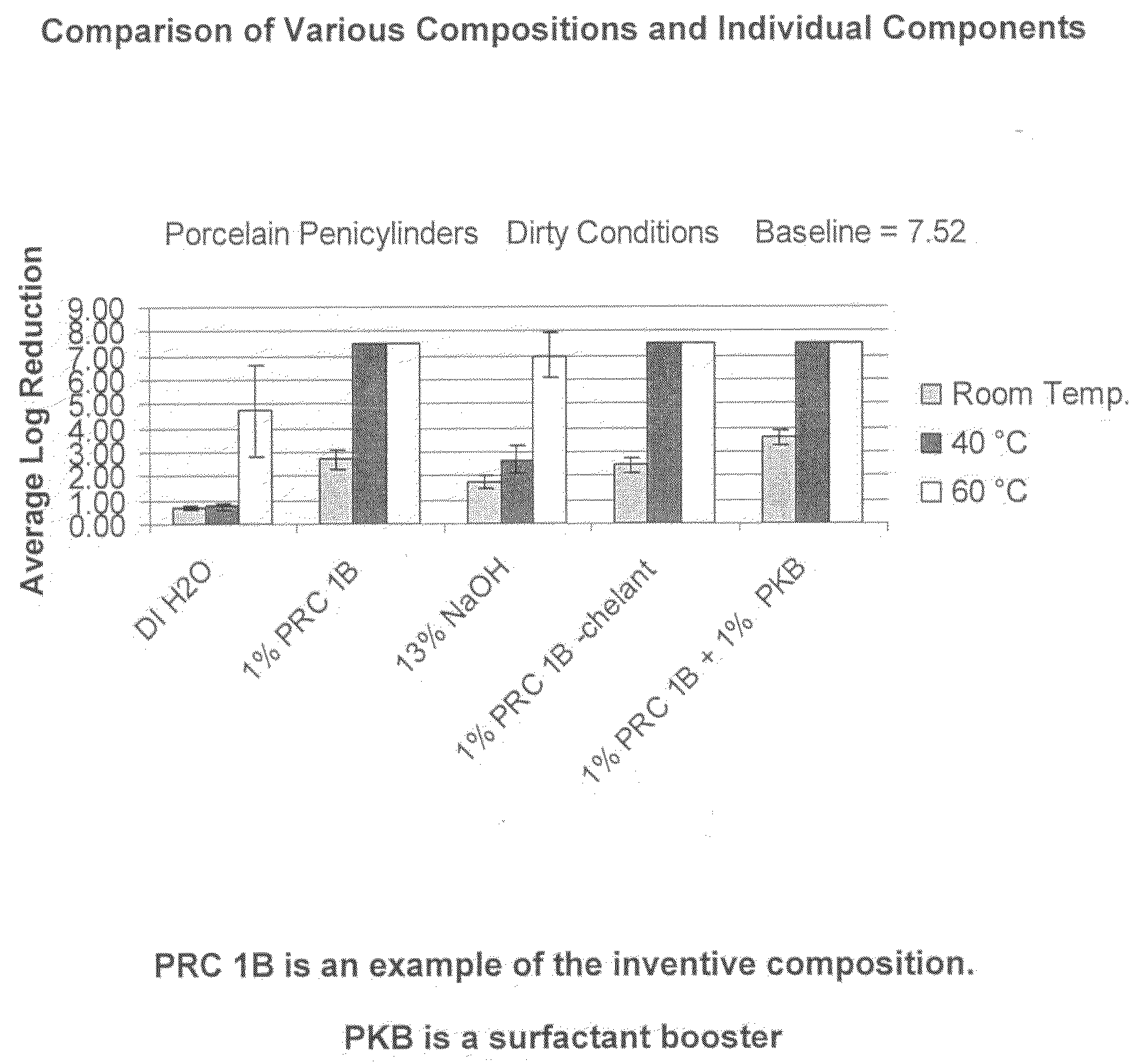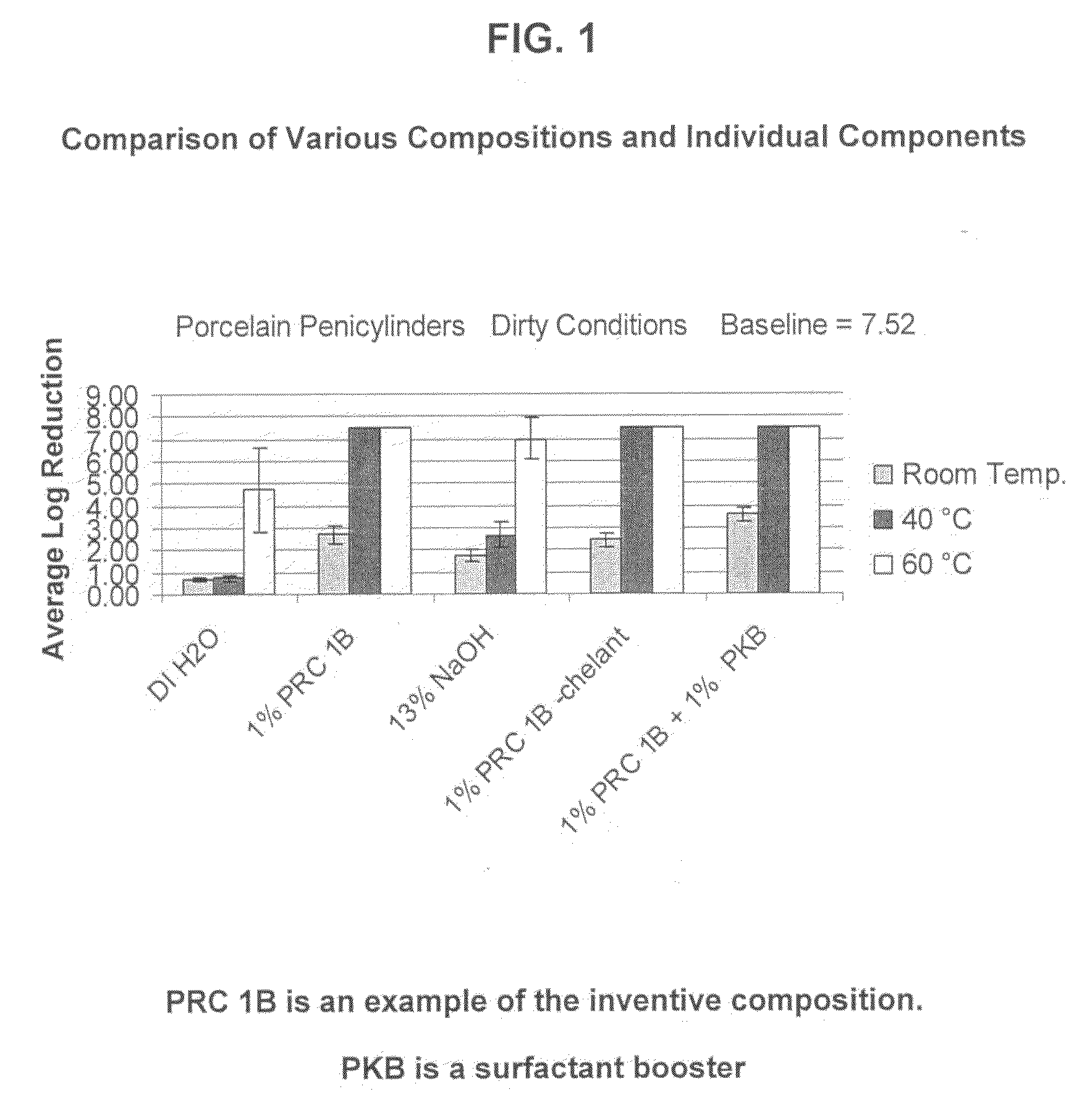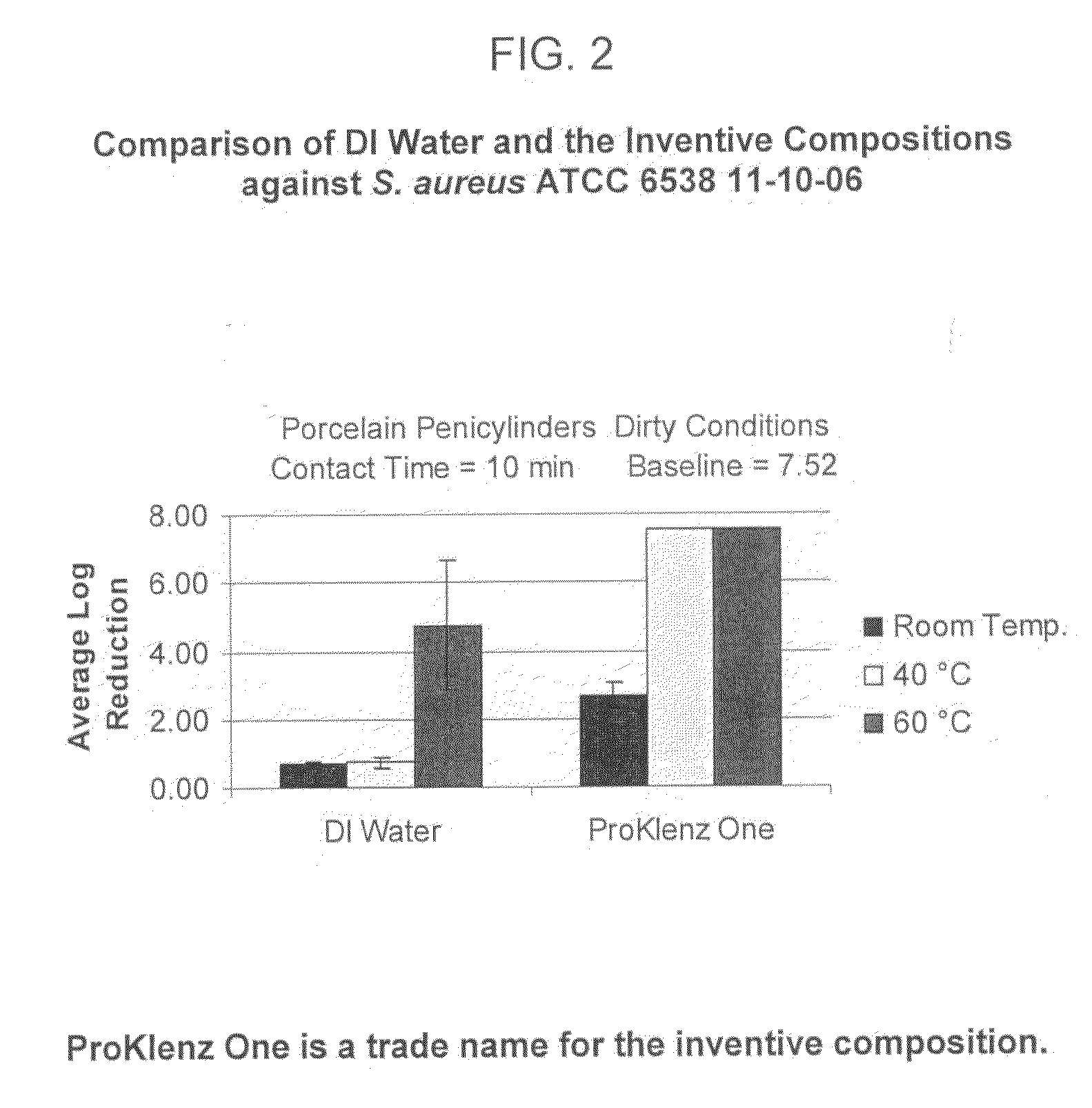Biodegradable alkaline disinfectant cleaner with analyzable surfactant
- Summary
- Abstract
- Description
- Claims
- Application Information
AI Technical Summary
Benefits of technology
Problems solved by technology
Method used
Image
Examples
example 1
bial / Virucidal Efficacy
[0074]PRC 1B Formulation: The following composition was tested:
RM NameWt. %FunctionBerol 5052.0%Nonionic Surfactant / Alcohol EthoxylateBerol 5081.0%Nonionic Surfactant / Alcohol EthoxylateAG 62064.0%Nonionic Surfactant - Alkylglucoside / Hydrotrope / 75% ActiveSodium Hydroxide26.0% Active Ingredient Disinfectant Claims / (50%)Source of AlkalinitySodium Xylene2.5%Anionic Surfactant - Hydrotrope / Sulfonate (40%)Analyzable SurfactantTrilon M (Trisodium 10%Chelating AgentMethylglycinediaceticAcid - 40%)Water54.5% Solvent
[0075]The above example of the inventive compositions was tested under hospital grade disinfectant (test conditions: 1%@60° C., 250 ppm hard water, 5 minutes). The two studies for the virucidal / poliovirus efficacy used different conditions (Test Condition 1: 1%@60° C., 250 ppm hard water, 10 minutes; Test Condition 2: 3%@ RT, DI Water, 30 minutes). Observed results indicated that the composition met hospital grade disinfect and virucidal requirements as stip...
example 2
Temperature / Ingredients
[0080]In order to confirm that the antimicrobial activity was not solely attributable to elevated temperature, the aqueous alkaline cleaning composition was compared to hot DI (deionized) water. FIG. 2 reflects the data obtained by the comparison and demonstrates that the synergistic combination of components was responsible for the enhanced antimicrobial activity and not simply an elevated temperature.
[0081]In order to confirm further that the antimicrobial activity was not solely attributable to alkalinity, the inventive composition was compared to a sodium hydroxide control containing the same active percentage as the composition. FIG. 3 reflects the data obtained by the comparison and demonstrates that NaOH alone is not responsible for the enhanced antimicrobial activity.
[0082]Table 4, below, shows results obtained which clearly indicated that the achieved microbiological efficacy is the result of the entire composition comprising NaOH, chelant, surfactant...
example 3
Concentration and Time
[0083]Table 5 shows the activity of the inventive composition in the presence of 5% fetal bovine serum soil load at room temperature with inoculated stainless steel penicylinders. Starting populations are listed in parentheses.
TABLE 5ContactLog ReductionTimefor 1% of theLog Reduction forOrganism(Min.)Product3% of the ProductS. aureus ATCC 6538103.23 (7.51)7.51 (7.51)20N / A6.88 (6.88)305.52 (7.51)7.51 (7.51)P. aeruginosa ATCC107.82 (7.82)7.82 (7.82 1544220N / A7.89 (7.89)307.82 (7.82)7.82 (7.82)S. enterica ATCC 10708107.93 (7.93)7.93 (7.93)20N / A7.99 (7.99)307.93 (7.93)7.93 (7.93)
[0084]The above results indicate that, at temperatures lower than 60° C., the inventive composition achieved excellent results with increased contact time. With increased contact time or increased concentration, antimicrobial activity is improved even at room temperature, demonstrating versatility of the formulation.
[0085]By testing characteristic gram positive and gram negative bacteria, a...
PUM
| Property | Measurement | Unit |
|---|---|---|
| Fraction | aaaaa | aaaaa |
| Fraction | aaaaa | aaaaa |
| Fraction | aaaaa | aaaaa |
Abstract
Description
Claims
Application Information
 Login to View More
Login to View More - R&D
- Intellectual Property
- Life Sciences
- Materials
- Tech Scout
- Unparalleled Data Quality
- Higher Quality Content
- 60% Fewer Hallucinations
Browse by: Latest US Patents, China's latest patents, Technical Efficacy Thesaurus, Application Domain, Technology Topic, Popular Technical Reports.
© 2025 PatSnap. All rights reserved.Legal|Privacy policy|Modern Slavery Act Transparency Statement|Sitemap|About US| Contact US: help@patsnap.com



